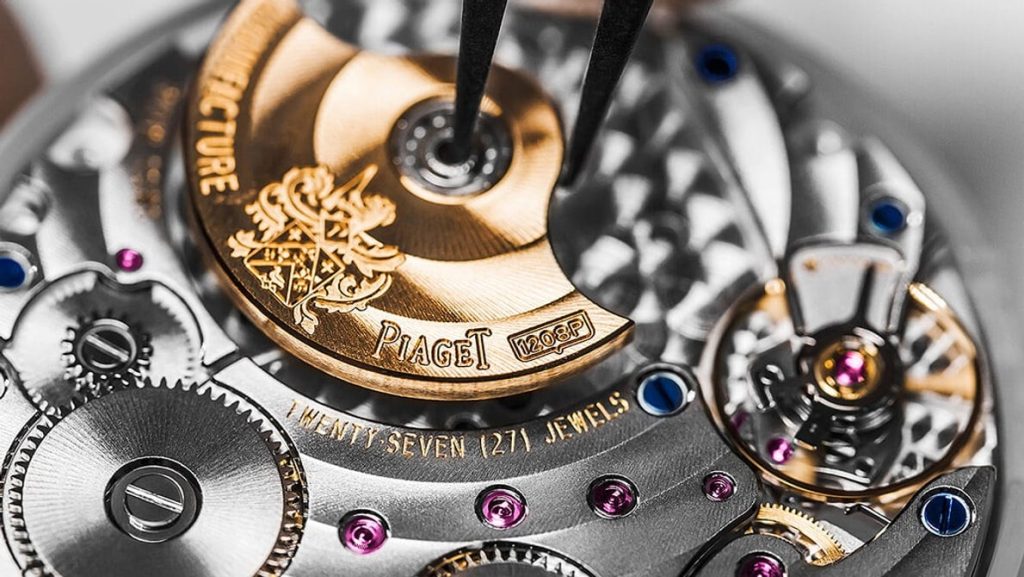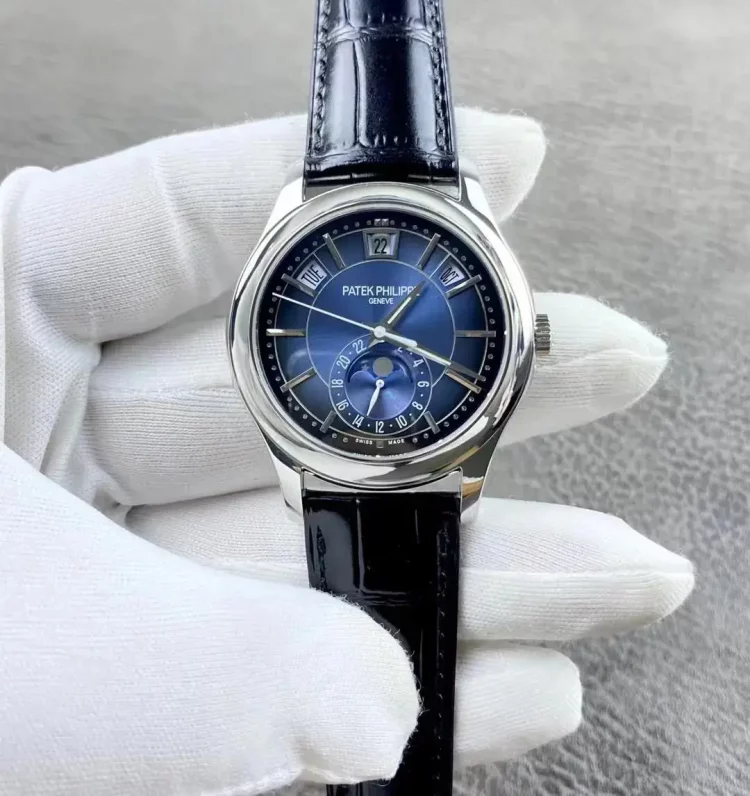Introduction: Understanding the Importance of Maintaining a Patek Philippe Watch
Patek Philippe is more than just a luxury watch brand—it’s an institution of Swiss watchmaking. Founded in 1839 by Antoni Patek and François Czapek in Geneva, the brand has been synonymous with precision, innovation, and timeless design. Today, Patek Philippe is revered for its superb craftsmanship, iconic timepieces, and intricate complications, making it one of the most prestigious names in horology. For many watch collectors and connoisseurs, owning a Patek Philippe is not merely about telling time; it’s about possessing a masterpiece of watchmaking that could last for generations.
However, owning such a remarkable piece of craftsmanship comes with significant responsibility. The complex movements, the precious materials, and the fine detailing that make Patek Philippe watches so coveted also demand proper care and attention. Without regular maintenance, even the finest watch could lose its accuracy, functionality, and value. Thus, understanding how to maintain a Patek Philippe is crucial for every owner. In this article, we will explore the various aspects of maintaining a Patek Philippe watch—why it’s important, how to care for it, and when to seek professional servicing to ensure that your watch continues to perform flawlessly for decades to come.
1. A Brief History of Patek Philippe and its Technological Innovation
The Birth of Patek Philippe
Patek Philippe was founded by Antoni Patek and François Czapek in 1839, though the company has gone through a number of transformations over the years. In 1845, Czapek left the company, and Patek partnered with Jean-Adrien Philippe, a watchmaker who revolutionized the industry by inventing the keyless winding system. This development marked the beginning of Patek Philippe’s rise as a leader in the world of high-end watches.
Innovations in Watchmaking
Throughout its history, Patek Philippe has pioneered some of the most innovative and complicated watch mechanisms in the world. From the world’s first perpetual calendar wristwatch in 1925 to the launch of the Calatrava in 1932, the brand has always been at the forefront of horological innovation. The introduction of watches like the Nautilus in 1976, with its distinctive stainless steel design, and the more recent Aquanaut series, has kept the brand’s offerings both timeless and contemporary.
Complicated Timepieces
Patek Philippe is also known for producing some of the most complicated timepieces ever made. Grand Complications, as these watches are called, feature intricate mechanisms such as minute repeaters, chronographs, tourbillons, and perpetual calendars. These complications are not only marvels of engineering but also serve to elevate the status of Patek Philippe watches as collectibles and heirlooms. The company’s ability to craft these complications with such precision is one of the primary reasons why regular maintenance is crucial. These complex systems require expert care to maintain their accuracy and functionality.
2. The Complexity of Patek Philippe Movements and Their Maintenance Needs
Manual Movements
Patek Philippe’s manual movements, such as the Caliber 215 PS, are prized for their elegance and simplicity. These movements require winding by hand, and because they lack a rotor for automatic winding, they rely entirely on the user to provide power. One of the most important aspects of maintaining manual movements is ensuring that they are not overwound, which could damage the movement and reduce its accuracy.
Automatic Movements
Patek Philippe also produces automatic movements, such as the Caliber 324 SC, which use a rotor to wind the mainspring as the wearer moves the watch. These movements are more convenient than manual ones, as they automatically wind themselves with the motion of the wrist. However, they still require proper care to ensure that the rotor is functioning correctly and that the movement remains precise.
Complicated Movements
For Patek Philippe’s Grand Complications, maintaining accuracy and functionality requires even more attention. These watches may feature a number of complications, including perpetual calendars, chronographs, and moonphase indicators. Such intricate movements need special care, as the parts are often delicate and prone to damage if not serviced regularly.

3. Basic Maintenance Practices for Patek Philippe Watches
How to Wind and Wear Your Watch
Winding your Patek Philippe correctly is crucial for the health of the movement. For manual watches, it’s important to wind them regularly, ideally every day, but avoid overwinding. For automatic watches, simply wearing them will keep them wound, but for long periods of non-use, a watch winder can help maintain the movement.
Best Practices for Daily Use
Avoid exposing your Patek Philippe watch to extreme temperatures, humidity, or sudden shocks. These can damage the delicate mechanisms inside. Always take care when engaging in activities that may expose the watch to water or dirt, such as swimming or working with chemicals.
Cleaning and Maintaining the Watch Case and Crystal
Wipe down the watch regularly with a soft cloth to remove dust, oils, and grime. For deeper cleaning, use a gentle soap solution with warm water and a soft toothbrush. Avoid abrasive cleaners, as they can scratch the watch’s surface. When cleaning the crystal, use a microfiber cloth to gently buff away fingerprints.
Caring for Straps and Bracelets
Whether you have a leather, rubber, or metal bracelet, proper care is essential. For leather straps, keep them dry and away from moisture to prevent degradation. Metal bracelets should be regularly cleaned with a soft cloth to prevent dirt buildup, while rubber straps can be wiped down with a damp cloth.
4. Understanding Patek Philippe’s Water Resistance: Importance and Maintenance
Patek Philippe watches come with different water resistance ratings, typically ranging from 30m to 100m or more. It is essential to understand your watch’s water resistance level and ensure that the seals and gaskets remain intact. Over time, the gaskets can wear down, leading to reduced water resistance. Regular checks of the gaskets and seals, especially after every service, are necessary to ensure they continue to protect your watch.
5. Preventing and Addressing Common Problems in Patek Philippe Watches
Overwinding and Underwinding
Both overwinding and underwinding can negatively affect the accuracy and functionality of a watch. Overwinding can damage the mainspring, while underwinding can result in the watch stopping
prematurely. Learning how to wind your Patek Philippe properly is crucial.
6. Patek Philippe Watch Servicing: When and How to Service Your Watch
Regular servicing is crucial for ensuring that your Patek Philippe continues to function at its best. Patek Philippe recommends having your watch serviced every 3 to 5 years. Authorized service centers will disassemble the watch, clean the components, replace worn parts, and lubricate the movement to ensure smooth operation.
7. Special Considerations for Patek Philippe’s Grand Complications
Grand Complications watches, with their intricate mechanisms, require extra attention and expertise. Maintenance of these watches involves delicate handling, especially for functions like minute repeaters and perpetual calendars. Expert knowledge is required to fix or adjust these complications if they ever malfunction.
Conclusion: The Art of Preserving a Patek Philippe Watch
Maintaining a Patek Philippe watch goes beyond simple cleaning and winding. It is about respecting the artistry and craftsmanship that goes into each timepiece. By following the maintenance tips outlined in this guide, you can ensure that your Patek Philippe continues to perform at its peak, maintaining both its value and its aesthetic beauty for many years to come.





































